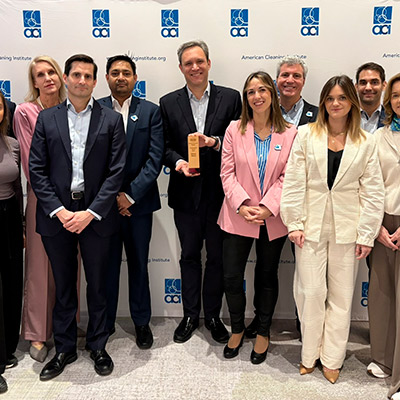- Safety at the facilities, for employees and towards neighboring communities, customers, and suppliers: the energy company's priority.
- Cepsa combines remote work and on-site presence as part of the relevant virus protection measures.
Once again, this year's event takes place in the midst of the health crisis, a situation that has led the company to incorporate and maintain measures that favor social distancing and prioritize hygiene in its operating centers, points of sale, and distribution, where its activity is considered essential. Prevention is an innate part of the work culture that encompasses all Cepsa professionals as well as ancillary companies, suppliers, distributors, customers, and neighboring populations.
Cepsa in Andalusia has two industrial centers with highly technological operations in Palos de la Frontera (Huelva) and San Roque (Cádiz). The refineries, chemical plants, and factories located there have implemented a prevention policy of utmost priority at the global level. In light of the ongoing health crisis, Cepsa maintains large-scale remote work and has closed common areas to avoid infections. Travel between centers has been reduced as much as possible and, instead, has been replaced by virtual visits to centers or video calls. In addition, the frequency and intensity of all hygienic and sanitary measures have been increased.
For Cepsa, providing a safe and healthy work environment for both internal and external workers is the key to a prosperous work environment. However, the company's actions are not enough; the people must also be part of the change, which is why Cepsa aspires for its professionals to transmit the importance of safety as a value in all work environments, with a view to the priority objective of zero accidents.
Furthermore, both refineries and chemical plants in Andalusia received certification of their safety and health-at-work system last year, under standard ISO 45001:2018, after successfully passing the audit conducted by AUDELCO. This new standard, which replaces the previous OHSAS 18001, reinforces the culture of prevention and incorporates new features such as the active participation of workers at all levels in terms of health and safety at work.
Cepsa relies on technology to better control risks: greater automation of production processes, monitoring of operations using cameras and sensors, and training of personnel using applications that also help to pass on experience from one generation to the next. Zero risk does not exist in any aspect of life, which is why Cepsa remains vigilant to minimize risk, seek solutions and anticipate contingencies in order to provide a rapid and effective response, as occurred with COVID-19.
Risk assessment and action protocols are carried out by identifying the specific risks of each area and job position, as well as taking into account the human factor. Each year, Cepsa drafts a Preventive Work Observations Plan to correct unsafe actions and behaviors and to encourage conversations around safety. Furthermore, it develops an annual Technical Inspections Plan, scheduling of maintenance production stops, and the Safety Walks Plan, which consist of tours performed by the management team with the operators in search of best practices.
The company has also put in place a Process Safety Management System with the aim of having a common framework that allows greater control over productive processes at all times, in accordance with the Energy Institute (EI) guidelines. It also maintains a comprehensive approach to safety in line with a standard of excellence that encompasses environmental protection, natural resource conservation, and energy efficiency.
In addition, there is an Internal Emergency Plan (IEP), which sets out the protocols for action in the event of an emergency, coordination with external emergency services, and how to evacuate personnel if necessary. For plans to be effective, training is key. Accordingly, drills and courses are held in accordance with the competencies needed for each position.
Cepsa's industrial centers have Internal Communication Committees, formed by professionals from different areas, and a Safety Bulletin is published every month, which includes experiences, related events, and employee learning. In addition, the Company develops the Healthy Company Program (sports activities, healthy lifestyle habits, work-life balance, etc.) aimed at mitigating the health risks identified by the company.




